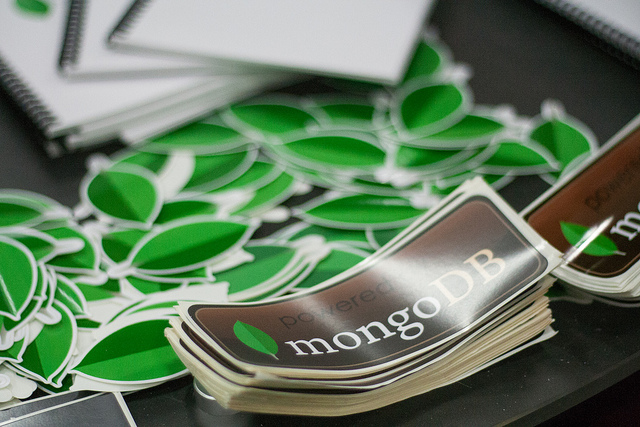Billion Dollar Unicorns: Should Oracle Buy MongoDB?
According to a Market Research Media report published earlier this year, the global NoSQL market is estimated to grow 21% annually to $3.4 billion by 2024. Analysts believe that with unstructured data having surpassed structured data globally, NoSQL will be the primary DBMS platform going forward. Billion Dollar Unicorn MongoDB (Nasdaq: MDB) is already delivering results on this high growth trend.

MongoDB’s Financials
Earlier this month, MongoDB announced its second quarter revenues that surpassed market expectations. Revenues of $57.5 million grew 61% over the year with Subscription revenues growing 63% to $52.9 million. Services revenues grew 48% to $4.6 million. Net loss grew from $26.1 million a year ago to $31.2 million, or $0.61 per share. Non-GAAP net loss reduced marginally from $21.2 million a year ago to $21.1 million, or $0.41 per share. The Street had forecast revenues of $51.7 million for the quarter with a loss of $0.45 per share.
For the current quarter, it expects revenues of $59-$60 million with a Non-GAAP net loss of $0.40-$0.38 per share. The market was looking for revenues of $59.92 million for the quarter with a loss of $0.40 per share. The company expects to end the current year with revenues of $228-$230 million and a net loss of $1.66-$1.62 per share. The market was forecasting revenues of $229.9 million with a net loss of $1.62 per share.
MongoDB’s Product Growth
During the quarter, MongoDB announced the release of MongoDB 4.0. The upgraded platform continues to be developer-friendly with the introduction of the Stitch feature and the availability of multi-document ACID transactions. Stitch allows for serverless applications so that developers can build value-added code without having to write back-end code for an application server. Without Stitch, an application would need to reside inside a server in a data center. To query a database like this would require developers to go through the server. According to MongoDb, this feature would make the service a better choice for mission critical use cases. The upgraded platform is also ACID compliant among multiple documents – which is a big win for a database offering. ACID or Atomicity, Consistency, Isolation, Durability is a database compliance standard that guarantees data integrity in transactions-based businesses.
MongoDB is also seeing significant traction for its Atlas offering. Atlas is its managed cloud database-as-a-service offering that added nearly 1,000 customers in the quarter. Atlas revenue grew 400% over the year and accounted for nearly 18% of total revenue for the quarter. MongoDB Atlas allows its customers to easily create sophisticated policies and distribute data closer to their users for low-latency performance. More recently, MongoDB Atlas was made available in Montreal and the Netherlands. The service is now available in 15 global Google Cloud regions.
MongoDB’s products are clearly very developer friendly. With annual revenues of nearly $230 million, it is still a tiny fraction of the multi-billion dollar NoSQL database market. According to TrustRadius, MongoDB is among the top rated NoSQL database providers. But the competition in the industry is strong with players like Cassandra, Redis, and Amazon’s DynamoDB in the race as well.
MongoDB has been slowly chipping away in the database market. Some analysts believe that it was eating into Oracle’s market share in the $40 billion market by offering a service that is more flexible, and costs much less. Oracle does not pay much attention to MongoDB though. Last year, Oracle’s co-CEO, Mark Hurd, had explained in another interview how he wasn’t worried about MongoDB since it was a much smaller company in the market. According to him, there are several more features in SQL databases that are not yet available in MongoDB’s offering. But that, in my opinion, is not such a difficult gap to fill. I think that given the current cloud hanging over Oracle, it may be a good idea for it to consider adding MongoDB to its portfolio. MongoDB’s addition will give Oracle the break it is looking for by adding NoSQL capabilities and help it put together a stronger defense against Amazon’s offering – a rival it is constantly at war of words with.
I would like to know if MongoDB’s latest upgrade makes it a more preferred offering among the users? Database customers are sticky customers and don’t switch too often, and too easily. In your experience, what is it that MongoDB will need to add to its services to make you make that switch?
MongoDB went public in October last year when it raised $256 million by selling shares at $24 each. The stock has had a stellar run so far. It is currently trading at $81.55 with a market capitalization of $4.3 billion. It had touched a 52-week high of $85.25 earlier this month. It has been climbing up from the 52-week low of $24.62 it had fallen to in December last year. The company’s capitalization has soared from $1.6 billion that it was valued at when the stock had listed. Prior to the listing, MongoDB was privately held and had raised $311 million from investors including Union Square Ventures, Flybridge Capital Partners, Sequoia Capital, Red Hat, Intel Capital, In-Q-Tel, New Enterprise Associates, EMC, Salesforce, Fidelity Investments, T. Rowe Price, and Altimeter Capital. Prior to the listing, MongoDB had been valued at $1.8 billion.
(Click on image to enlarge)



